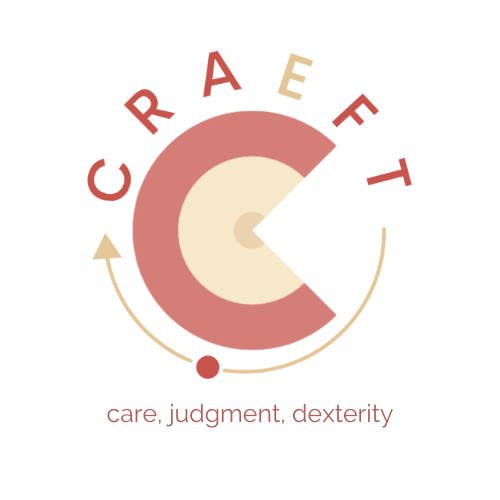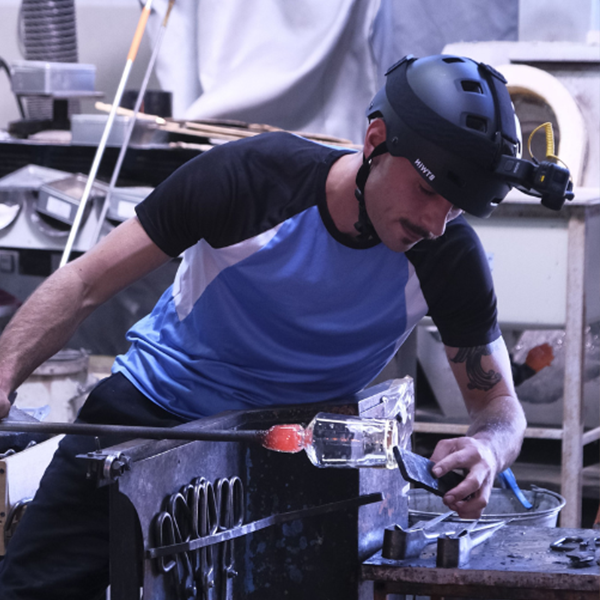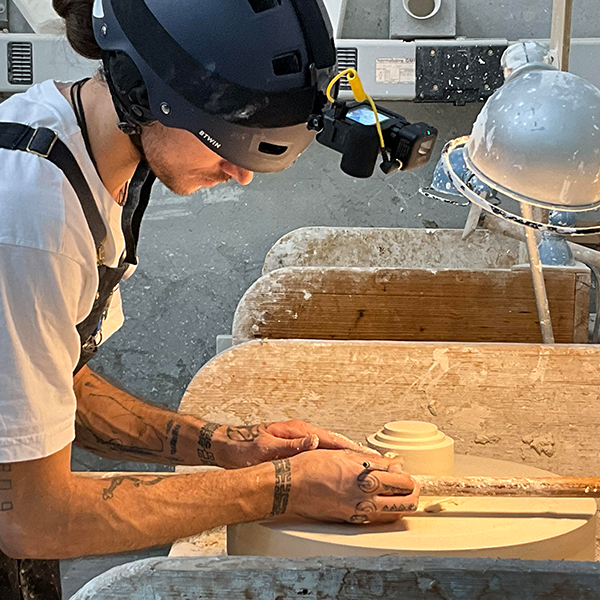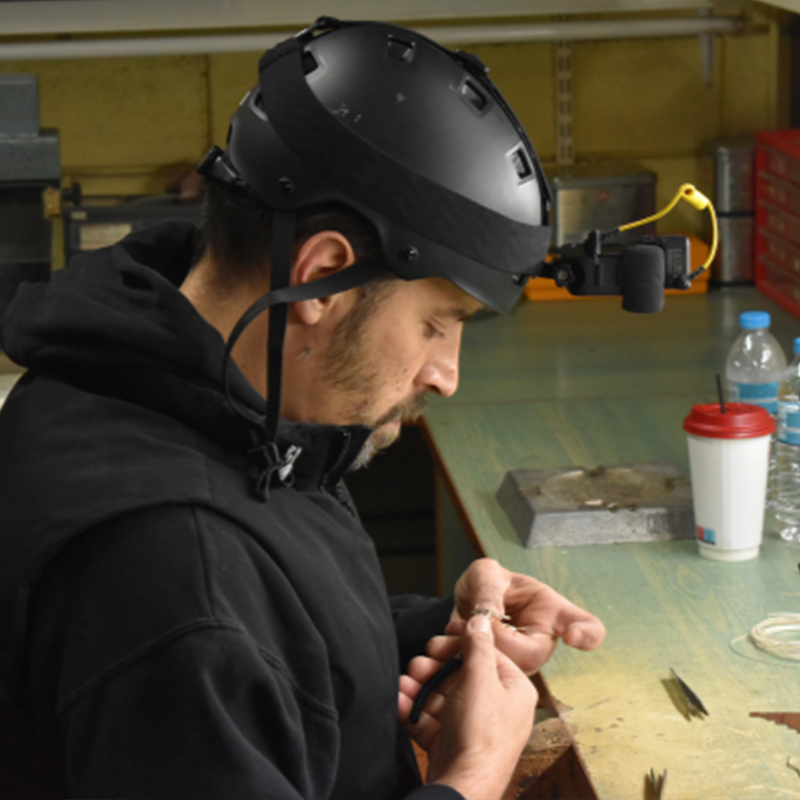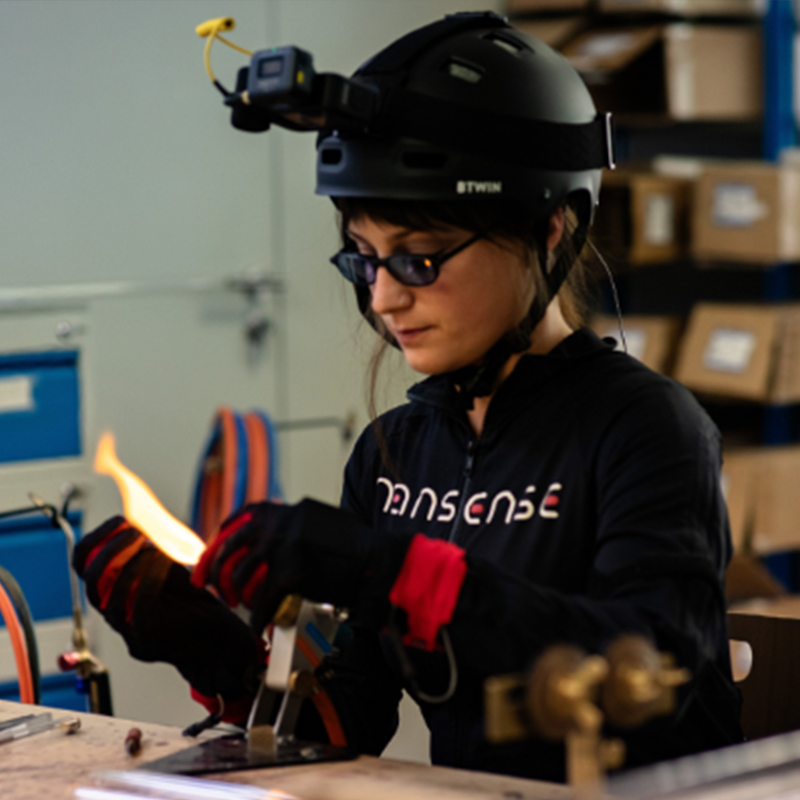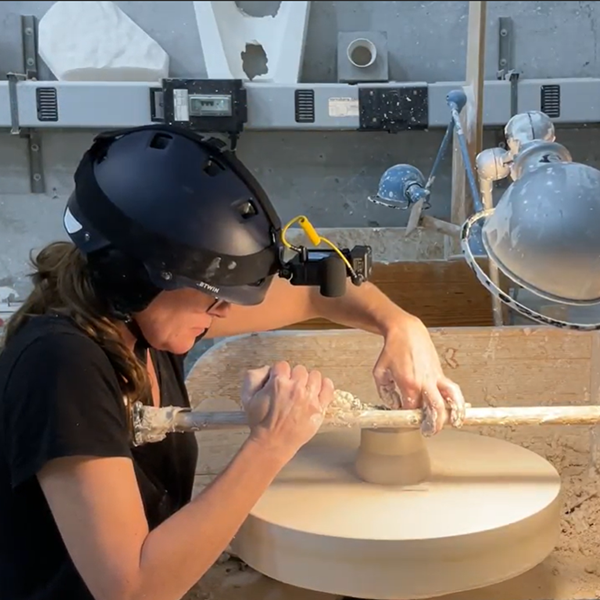Methodology
Main aim of the Craeft methodological approach is to understand and document craft-making processes. The uniqueness of the Craeft methodology lies in its innovative fusion of social sciences, primarily anthropology, and artificial intelligence as well as contributions from various other fields. This approach marks a departure from traditional solitary methodologies confined within single fields. Instead, it embraces the synergistic potential of multidisciplinarity to tackle the complexity of craft gestures and their understanding.
The Craeft Ethnographic Protocol aims to enhance the documentation of traditional crafts by using digital tools and collaboration across disciplines. It categorises digital assets and knowledge into craft practice and context, allowing for flexible and adaptable approach for comparative studies across diverse contexts. Inclusive collaboration with craft communities is promoted, addressing gender biases and ethical considerations for participants. The protocol’s interdisciplinary approach aims to enhance understanding of craft processes through different data collection methods encompassing operational sequences, professional biographies, tacit knowledge, and practitioner motion.
The Craeft Ethnographic Protocol is implemented throughout diverse craft practices meticulously chosen as case studies by the Consortium. They are: Nancy glassblowing, Aubusson tapestry, Yecla woodcarving, Limoges porcelain, Tinos marble-carving, Ioannina Silversmithing, Cretan pottery and Cretan textiles. These practices, embedded in the European craft context, span across France, Greece, and Spain, each bearing its unique historical, cultural, and social nuances. The complexity introduced by the diversity of these practices and their socio-cultural contexts enhances the intricacy of data collection, providing a multi-layered set of elements for analysis. Despite the complexity and layer information, the main focus is understanding how the body interacts with materials and tools, and how technical knowledge is applied in this process.
Co-creation
The co-creation phase of the Craeft methodology involves collaborative engagement with craft practitioners to gain an initial understanding of the craft under investigation. Workshops are organized to facilitate interaction with the craft community, focusing on both the technical aspects of craft practice and its broader cultural and historical context. Craft practitioners play a crucial role in conveying insights into craft practice, workspaces, processes, materials, and traditional narratives. The goal is to establish a foundational understanding before proceeding to more detailed ethnographic activities.
Craft vocabulary development is another key aspect, aiming to systematically identify key categories within each craft domain and compile an extensive list of terms. This vocabulary is collaboratively generated with practitioners, ensuring inclusivity and cultural relevance. The vocabulary includes verbal definitions as well as visual representations sourced from open online platforms and complemented by ethnographic recordings, facilitating accessibility and understanding across linguistic and cultural boundaries.
The preparation of ethnographic recording sessions involves creating detailed scenarios following a structured approach, such as the “three-act structure,” to decompose actions into simpler steps. These scenarios are refined in collaboration with practitioners to ensure accuracy and effectiveness in capturing craft processes.
Rationale
The Craeft Ethnographic Protocol, through an interdisciplinary perspective, enhances understanding of technical processes in craft environments, facilitating standardised data collection for comparison and analysis. It supports framing craft representation, digital re-enactment, education, and design within each craft instance. This protocol, inclusive of artisans’ experiences, converges various methodological approaches from Social Sciences and Computer Sciences.
In Social Sciences, methods like Anthropology of Techniques, Sociology of Work, and Ethnomethodology are utilized to gather dimensions associated with craft practices. This includes observing operational sequences, collecting data on craftspeople’s life courses, and eliciting verbal and emotional data.
In Computer Sciences, modalities such as images, video, and motion capture are used to capture practitioners’ movements and sensory recordings. Material transformations are digitised to document, analyse, and preserve traditional crafts and their cultural contexts comprehensively.
Photographic and 3D documentation techniques, guided by digitization standards, further strengthen the protocol’s commitment to represent objects and workspaces in detail, aiding in the preservation of cultural and historical dimensions.
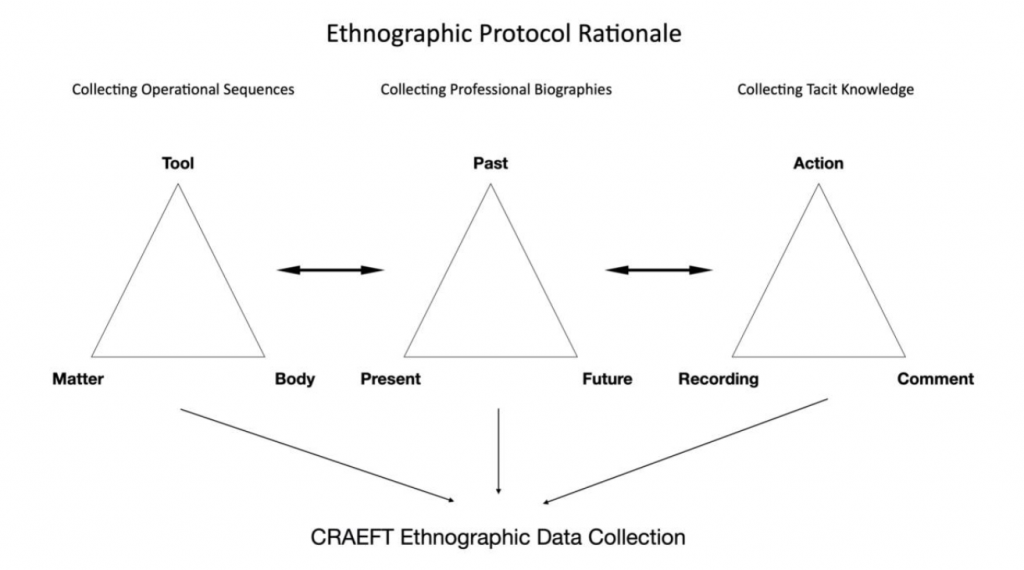
Methodological components of the Ethnographic Protocol
Operational sequences
The Craeft project utilizes the Anthropology of Techniques to understand technical processes in craftwork. It focuses on gestures and bodily knowledge, considering technique as a social fact and emphasizing the sequential nature of technical activities. The operational sequence method documents these processes, highlighting their relational complexity and shifting attention from finished products to the crafting process itself.
In selecting representative gestures, the project aims for a deeper exploration of craft-making. Artisans play a key role in identifying these gestures, ensuring authenticity and preserving tradition. However, focusing on select gestures presents challenges, such as oversimplification and the limitations of recording modalities. Despite these challenges, the project seeks to strike a balance between abstraction and specificity to thoroughly analyse and understand craft-making processes.
Porcelain molding in Limoges
Professional biographies
Conducting interviews with craftspeople about their professional biographies provides context to their practices and sheds light on knowledge acquisition and transmission.
Tacit knowledge
The Ethnographic Protocol incorporates video elicitation techniques to extract tacit knowledge from craft professionals. Rooted in Ethnomethodology, which studies how people navigate social interactions, these techniques aim to reveal the intricate details of professional activities. Through video elicitation, practitioners describe their gestures and intentions, providing insight into their personal and emotional dimensions. The method involves showing practitioners recorded footage of their own actions and prompting them to reflect on their decision-making processes. This approach facilitates a deeper understanding of craft practices by capturing the nuances of subjective experiences and intentions.
Practitioner motion
The Ethnographic Protocol incorporates various recording modalities, including audio, video, and motion capture, to comprehensively document practitioner actions and their impact on materials. Additionally, it focuses on capturing the sensory outcomes of crafting events to understand practitioners’ decision-making processes.
In terms of images, carefully selected photographs serve as keyframes, allowing for the depiction of motion between them and conveying craft actions effectively.
Video documentation, including egocentric views, provides a detailed perspective of practitioner activities and is valuable for crafting ethnography and instructional purposes. Egocentric videos offer a practitioner’s viewpoint and are suitable for various crafts, but may not capture workshop overviews. Fixed viewpoints minimize equipment intrusion and are ideal for tabletop crafts, while active viewpoints offer flexibility in capturing detailed actions, such as in sculpture.
Motion capture technology precisely records practitioner movements, enabling detailed analysis. It involves placing markers or sensors on the practitioner’s body to capture gestures accurately. Optical and inertial motion capture techniques are utilized based on specific requirements for accuracy and cost.
Overall, these recording methods offer diverse perspectives and enable detailed analysis of practitioner movements and their interaction with materials, enhancing our understanding of craft practices.
Dual perspective: Egocentric (first-person) view and exocentric view (third-person) showing the same glass blowing gesture at Cerfav
To gain a better understanding of the Craeft Ethnographic Protocol, watch the Live Twitch animated by Mad’in Europe, CERFAV and other CRAEFT partners
Take a behind-the-scenes look at the digital recording of blowtorch craft master Frédéric Demoisson’s gestures. This recording aims at exploring the possible interconnections between anthropology and computer sciences, using egocentric video followed by an elicitation session with the master.
